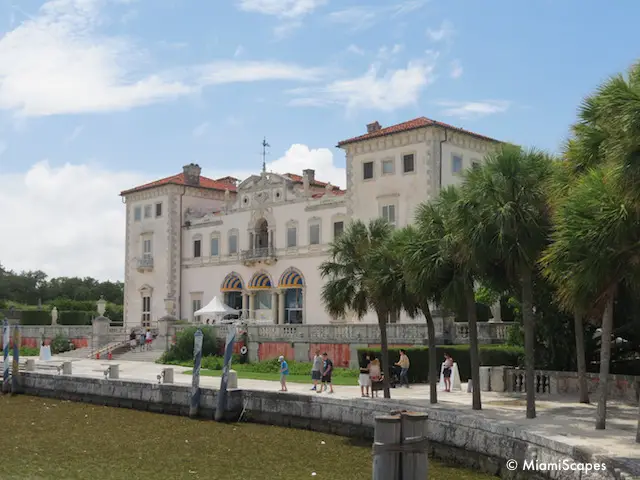
The Vizcaya Museum and Gardens is a majestic estate located on a beautiful setting right on Biscayne Bay.
Built in the Italian Renaissance style and housing an outstanding collection of furnishings and art, this architectural wonder and its magnificent gardens blend in the South Florida landscape to offer a breath of fresh air from the congestion of modern Miami and the neon ritziness of South Beach just minutes away.
Granted, if you're just back from touring the famous galleries in Florence or the Chateaus of the Loire Valley, a visit to Vizcaya might seem a bit anticlimatic, but this is such a unique place, specially if you think about the young history of our country, having a grandiose little oasis like this in Miami is really a treat.
The Vizcaya Estate - Background
Vizcaya was commissioned by industrialist James Deering to serve as his winter home in 1914. His vision was to replicate the Italian Renaissance and Baroque styles he was so keen on from his travels throughout Europe, but at the same time, the mansion was to have all manner of modern conveniences.
The surrounding Gardens were completed in 1921, reflecting European designs and the unique flora belonging to our sub-tropical climate.
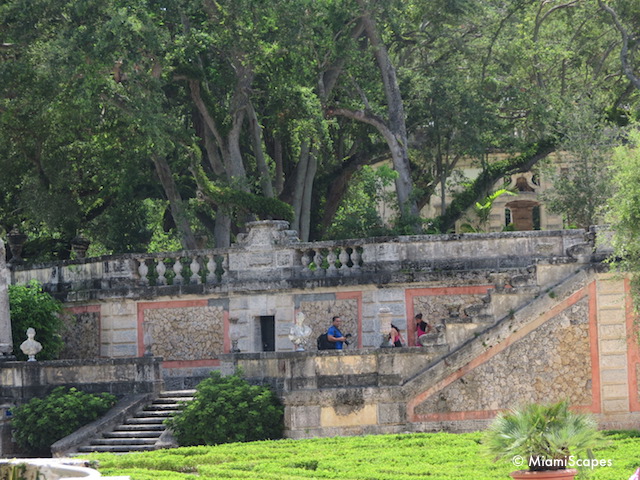
After Deering's death in 1925 the property was maintained by limited staff, the mansion was transferred by his descendants to Miami Dade County in 1940 and turned into a museum in 1953 for the public's enjoyment. It has now been designated a National Historic Landmark.
The mansion's architectural style blending with the ornate surroundings together with the superb art collection, make this one of Miami's top attractions.
Interiors and the Courtyard
The centerpiece of the house is the Courtyard, borrowing from the Italian pattern of Mediterranean architecture, with the halls and chambers surrounding it. The Courtyard was formerly open air but has now been enclosed by an impressive glass skylight to protect the treasures from the elements.
The furnishings and decor are a priceless collection of items acquired by Deering during his trips to Europe. The house might be "new" for historical standards, but the furnishings are certainly original pieces, some centuries old, that are a real joy to discover as you walk through the halls:
- A rug that belonged to King Ferdinand of Spain's grandfather...
- A section of the ceiling from a Venetian palace...
- The base of a table from the ruins of Pompei...
And as you encounter all these pieces of history, note also the modern features incorporated into the design which existed when the house was first built: elevators, central heating, modern phone system and fire control.
You will see many styles in the different halls and guest rooms, from English Neoclassical to Italian Rococo. The lavish furnishings and art pieces are from all over the world. There are not only European but also Asian themes and details.
The audio-guide is worth the extra $5, it makes the rooms come alive as it takes you through. It is normally about one and a half hours and you can stop and continue at your own pace. You can get the audio-guide at the ticket booth in different languages: English, Spanish, Portuguese, French and Creole. There is also a printed guide for $3.
Non-flash photography and video recording are now permitted throughout the Museum and of course once outside, it is a photographer's dream.
Exterior Features and Gardens
The beautiful setting and gorgeous views of the bay, plus the many exterior features, gazebos, staircases, bridges, fountains, make an excellent backdrop for photographs.
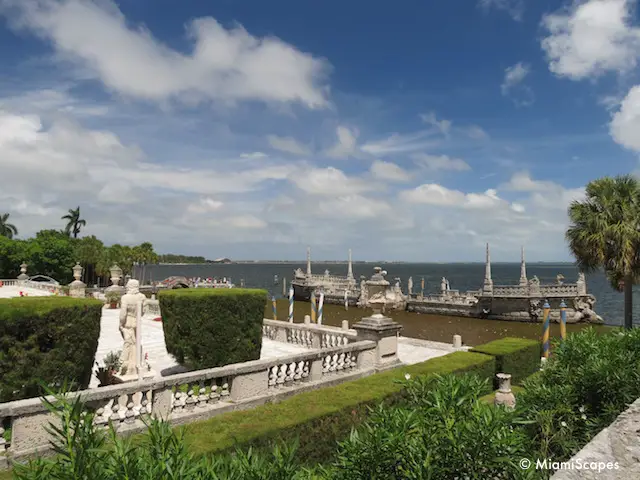
From the moment you set foot on the grounds, you get a feeling for the opulence you are about to experience.
From the ticket booth, the path will take you through elaborate gates, splendid statues, fountains and manicured lawns that lead you around to the north side of the house.
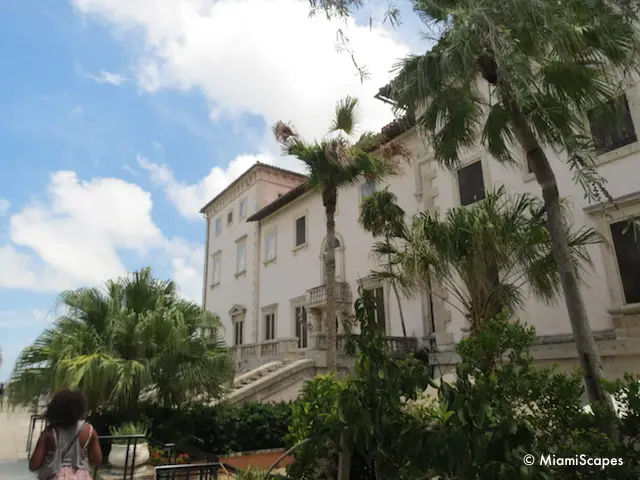
From here you spot the Vizcaya Cafe in a quiet corner, a great place to unwind after your visit for lunch or a refreshment in charming surroundings, and the Orchidarium with beautiful displays of whatever happens to be in bloom.
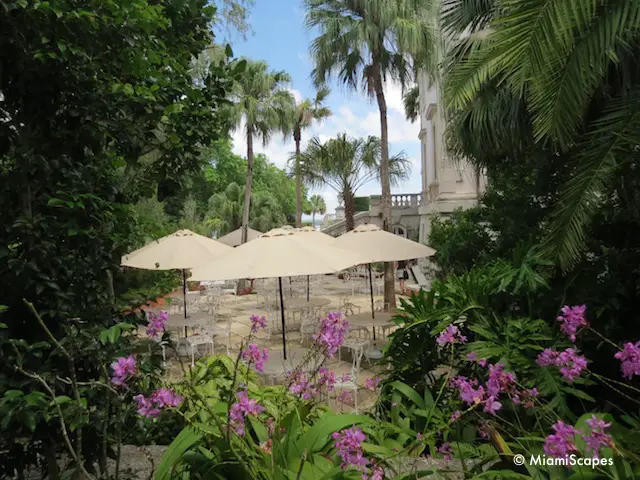
On the other end, the swimming pool extends underneath the house.
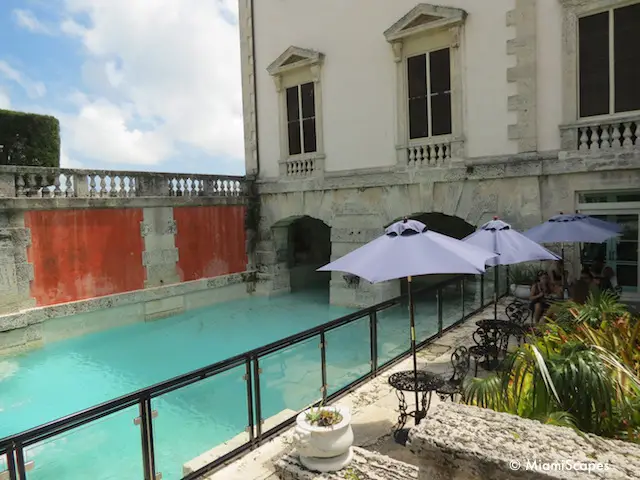
The east side of the house faces Biscayne Bay. On the north end we find a boat landing which in the old days was used for transporting cargo supplies and passengers to Vizcaya. It extends further into the bay which gives you amazing views of Miami and Port of Miami.
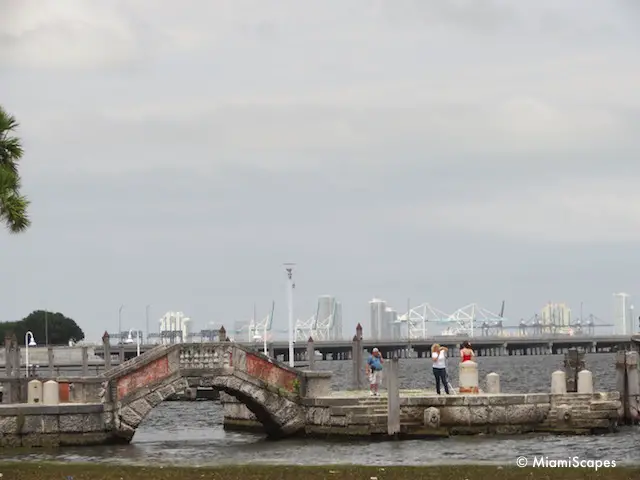
In the middle, the Great Stone Barge is richly carved, decorated with nautical motives, stone pillars and balustrades. Besides its aesthetic value, the barge would serve as shelter for small boats, and was also used for entertaining guests.
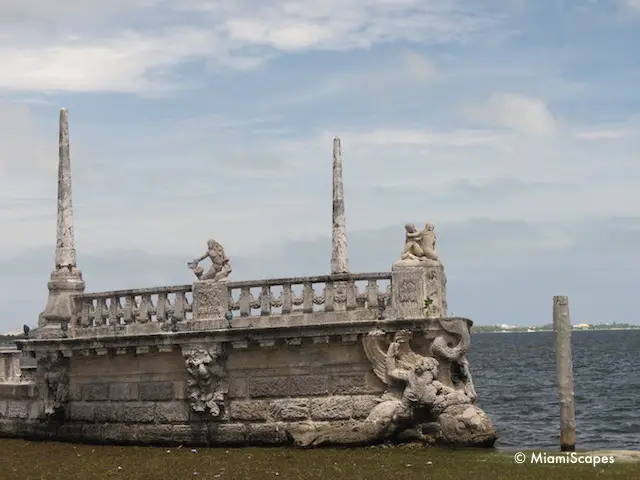
Finally, on the south end we find the Tea House with its delicate filigree roof and killer views of the bay.
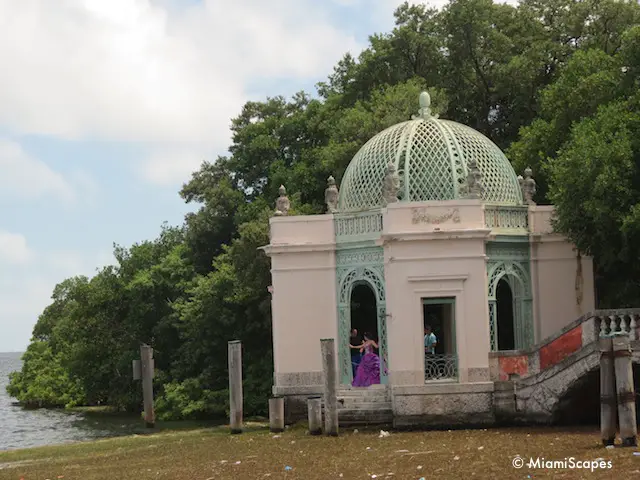
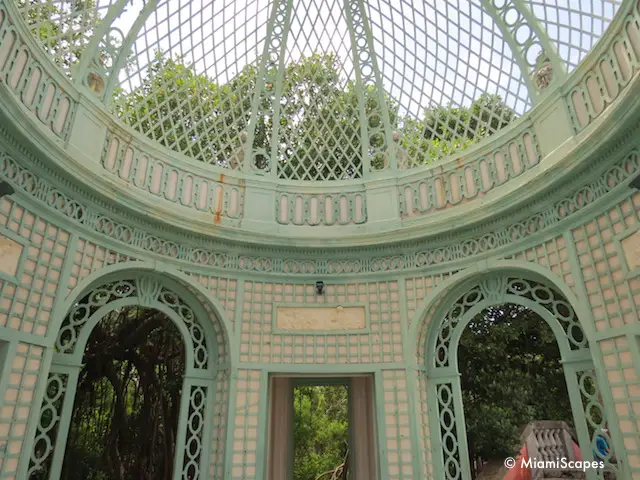
From here as you wrap around the south end, you enter ten acres of pure bliss: Vizcaya's Gardens.
Vizcaya Museum and Gardens at a Glance
Where?: 3251 South Miami Avenue, in the north Coconut Grove area of the City of Miami. Directions and more info: www.vizcaya.org
Parking: Plentiful and free!
Opening Hours: 9:30 a.m. to 4:30 p.m. but closed Tuesdays, Thanksgiving and Christmas Day
How Much?: Adult $22, Teens (13-17) $15, Children (6-12) $10, Seniors (+65) $16, and Students with ID $15, military FREE.
Entrance to Vizcaya is free with the Go Miami Card.
Vizcaya Tour:Vizcaya Museum and Gardens including transportation from your downtown or Miami Beach hotel option.
Audio Tour: $5 available in English, French, Spanish, Portuguese and Creole. Guidebook in English only $3
Entrance to the Vizcaya Cafe is only with paid entrance to the Museum.
Booking.com







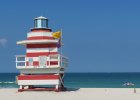
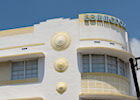
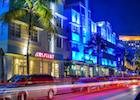
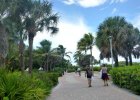
Send a Tip!
Got something to share? Let us know!